The most sensational finds ever discovered in glaciers
The Earth's ice cover is disappearing, and at a very rapid pace. For example, in Glater National Park in Montana, due to climate change, glaciers threaten to completely melt by 2030. Since 1850, the total number of large glaciers in the area has decreased from 150 to 25.
However, this serious problem also has the other side of the coin: such natural processes lift the veil of secrecy over unique finds that have rested in the thickness of the ice for centuries. And with each new discovery, humanity gets closer to unraveling the mysteries of both the past and the future.
These are the incredible discoveries that have been made thanks to global warming and melting ice.
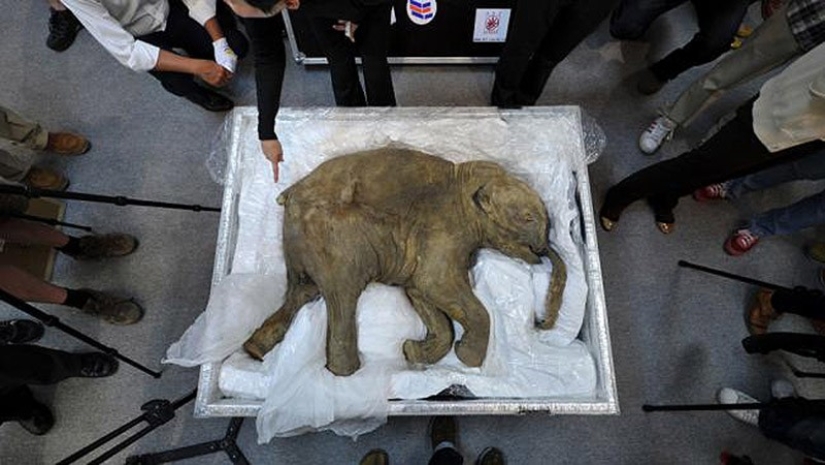
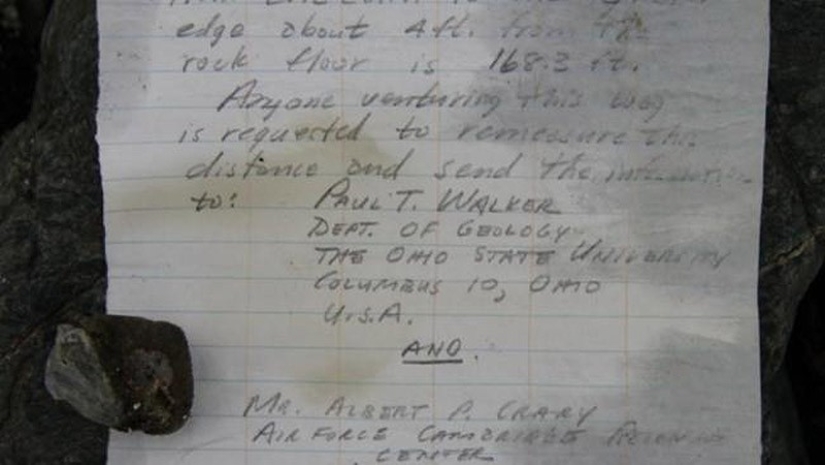 The note, dating back to 1959, was left in a bottle buried under a pile of rocks near a polar glacier. It contained a message that proved the enormous impact global warming and climate change were having on nature.
The note, dating back to 1959, was left in a bottle buried under a pile of rocks near a polar glacier. It contained a message that proved the enormous impact global warming and climate change were having on nature.
In 1959, American geologist Paul Walker placed a note in a bottle and buried it under a pile of rocks on Ward Hunt Island in Canada. The message contained simple instructions: whoever finds the note should measure the distance from the place where the bottle was to the edge of the glacier.
In the summer of 2013, scientists from the research station at Laval University Warwick Vincent and Dennis Sarrazin discovered a message left by Walker 54 years ago. The scientists fulfilled, in fact, the geologist’s last wish, since Walker died a month after he buried the bottle in the stones on the island. What they discovered was truly shocking. In 1959, Walker measured the distance from these stones to the edge of the glacier to be 51 meters. And already in 2013 this distance was 122 meters. Vincent and Sarrazin argue that this difference between the two measurements indicates the dramatic consequences of ongoing global warming.
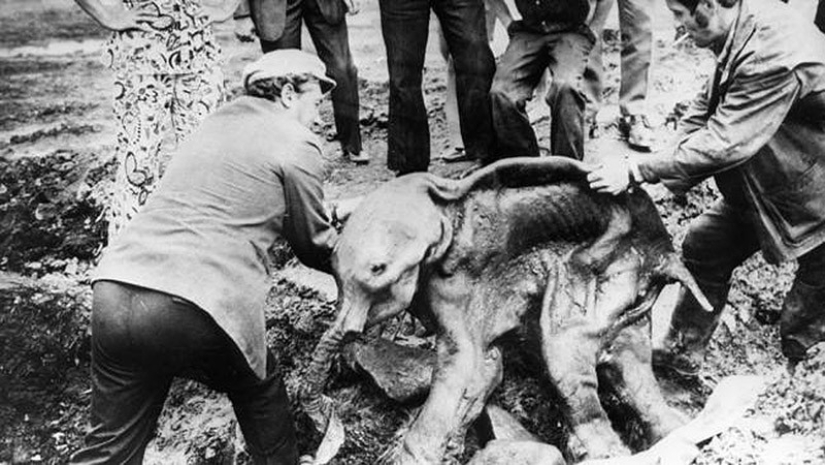 Two men lift the well-preserved carcass of a baby mammoth that was accidentally bulldozed from permafrost in 1977.
Two men lift the well-preserved carcass of a baby mammoth that was accidentally bulldozed from permafrost in 1977.
In 2010, a female woolly mammoth weighing one ton and named Yuka was found in Siberia, perhaps the most unexplored region of Russia. Having lain in the Siberian permafrost for 39,000 years, the mammoth's body was so well preserved that even fur and muscle tissue were visible, and for the first time in the history of anthropology, scientists were able to take blood samples from a prehistoric animal.
The researchers suggested that, most likely, the mammoth got stuck in the swamp and died there, because the lower part of its body remained intact due to the surrounding ice. Despite the fact that some parts of the mammoth's body have completely disappeared, such a find is of unprecedented scientific value.
Scientists in South Korea said that thanks to DNA samples obtained from Yuki's body, they now have a chance to clone mammoths, thus reviving the entire species. If this does happen, researchers will no longer have to travel to Siberia in search of woolly mammoths.
 Ice man nicknamed Ötzi. The photo was taken on September 24, 1991 in Innsbruck.
Ice man nicknamed Ötzi. The photo was taken on September 24, 1991 in Innsbruck.
In September 1991, two German tourists stumbled upon an unusual find: the well-preserved remains of a human body that had been frozen in ice. Then tourists mistook the ancient corpse for the remains of a climber who had recently died in the mountains. However, after radiocarbon dating, scientists found that the mummified man was no less than 5,000 years old. The discovery was unique in its kind, because never before had scientists restored a Chalcolithic corpse completely untouched by time.
Researchers named the ice man Ötzi (or Ötzi, Otzi), because the last refuge of the mummy was the Ötztal valley. For many years, scientists have pieced together information about the lifestyle, language and cause of death of the mysterious ancient man.
Ötzi's stomach contained undigested remains of his last meal, indicating that he died rather suddenly. Later, thanks to X-rays, it was determined that an arrowhead was stuck in the mummy’s shoulder, which proved that 5,000 years ago, Ötzi was killed in a battle with an enemy.
Shortly after his death, Ötzi's body was most likely frozen in ice and covered with snow, which saved him from predators. And since the corpse lay in a deep ravine, it was not damaged due to glacier movements.
According to National Geographic, DNA analysis proved that the ancient ice man had at least 19 living relatives and was a descendant of the inhabitants of Corsica or Sardinia.
Ötzi's mummy was exhibited at the South Tyrolean Museum of Archeology in Bolzano, Italy.
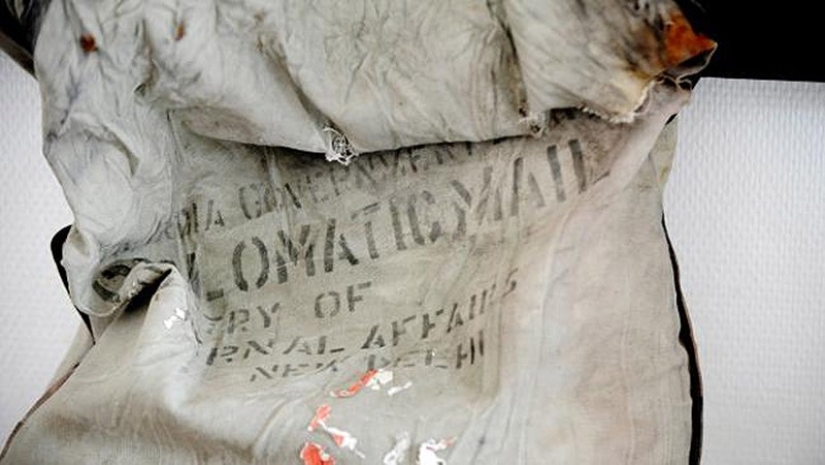 A diplomatic bag was found in 2012 at the site of an Indian plane crash near Mont Blanc.
A diplomatic bag was found in 2012 at the site of an Indian plane crash near Mont Blanc.
One day, a French climber unexpectedly found a treasure during his ascent to Mont Blanc. It was a metal box protruding from the surface of the Bosson Glacier. The box contained rows of pouches marked “made in India.” Each bag contained approximately 100 precious stones - rubies, emeralds and sapphires.
This box of jewelry is said to be valued at $377,000.
But instead of disappearing forever with these untold riches, the honest climber gave them to the police. The jewels were then transferred for storage to the administration of the city of Chamonix in eastern France, where local authorities tried to unravel the mystery of their origin.
And the clue was hidden in the stamp - “made in India”. By some mystical coincidence, two major plane crashes of Indian planes occurred in the area of the Mont Blanc glaciers.
One of the crashes, which occurred in 1950 on the way to Geneva, claimed the lives of 48 people. And 16 years later, the pilot of a Boeing 707, heading to New York via Geneva and London, miscalculated the flight altitude and crashed into the top of Mont Blanc. All 117 passengers and crew members were killed.
As a result of the Boeing 707 crash, a crater was formed on the mountainside, which still contains the wreckage of the plane and other things that belonged to the passengers. Among the personal belongings, a bag with diplomatic mail was found, shown in the photo above.
Experts believe that the treasures may be associated with a family jewelry business located in London.
 Recently, scientists came across an amazing find - a giant virus over 30,000 years old, which was located in permafrost near the Kolyma River in Russia.
Recently, scientists came across an amazing find - a giant virus over 30,000 years old, which was located in permafrost near the Kolyma River in Russia.
According to scientists, such viruses are completely safe for humans, because they parasitize only on amoebas. Scientists also do not exclude the possibility of other viruses being found in the depths of permafrost that will parasitize not only single-celled organisms. For example, due to global warming, viruses may “wake up” from hibernation and pose a potential danger to humans.
As French biologist Jean-Michel Claverie from the University of Aix-Marseille, who discovered the virus, notes: “There is a small possibility that pathogenic microbes that infected ancient people could be reborn and infect modern humanity. These pathogens can be common bacteria (treatable with antibiotics) or drug-resistant bacteria and even dangerous viruses. If they died out a long time ago, then our immune system is not ready to resist them.”
One way or another, today this is the largest virus described by science that “hunts” amoebas. The megavirus lures the amoeba by pretending to be a “tasty” bacterium. The amoeba, consuming such bait, becomes a victim of the virus, multiplying it into many copies.
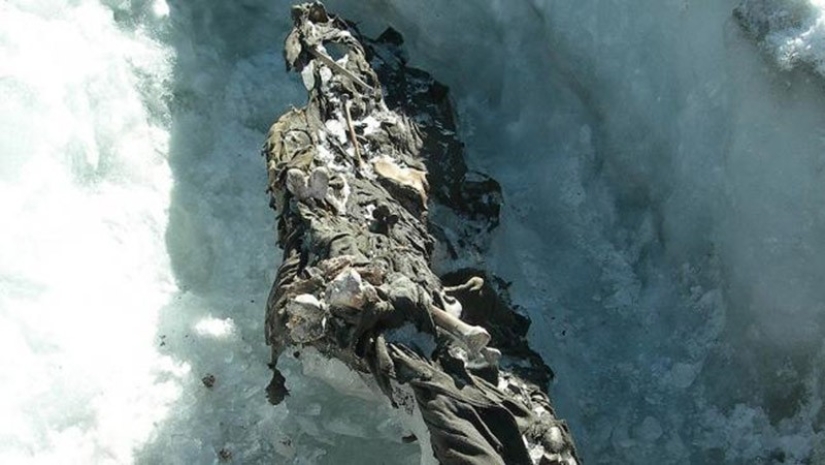 The remains of two Austrian soldiers found near the Presena Glacier in 2012, Italy.
The remains of two Austrian soldiers found near the Presena Glacier in 2012, Italy.
As glaciers melt near the small Italian mountain village of Peio, people continue to find the remains of soldiers, as well as other artifacts from the First World War.
In a battle known as the "White War", soldiers of the Austro-Hungarian Empire fought Italian forces for dominance over the mountainous terrain. Historians estimate that hundreds of thousands of soldiers died on the battlefield during the battle, many of whom could not withstand the extreme weather conditions. The temperature then dropped below 22 degrees, and avalanches, which were dubbed the “white death,” swallowed up entire companies. Many soldiers who fought in that place went missing.
And now, almost a century later, 80 mummified bodies buried under a melting glacier have surfaced. In 2004, a mountain guide witnessed a terrible sight: the corpses of three Austro-Hungarian army soldiers killed in 1918 were sticking upside down from a wall of ice. The frozen remains were found near San Matteo at an altitude of 3,658 meters above sea level.
And in 2013, the bodies of two more soldiers were discovered in a burial pit of the melting Presen glacier (pictured above). Since the bodies lay under thick ice for a long time, their hair and even skin tissue were quite well preserved. The soldiers' personal belongings were also found in the glacier, such as a love note addressed to "Maria".
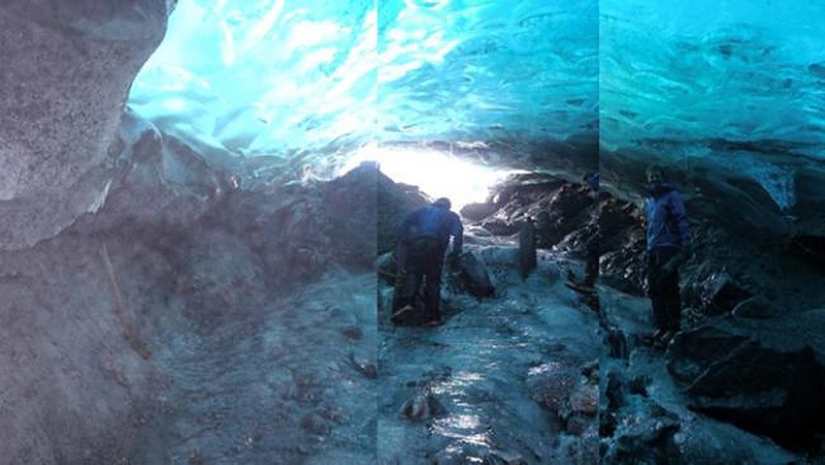 The Mendenhall Glacier has been on the move since the mid-1970s. It is one of 38 glaciers located near the Juneau Icefield.
The Mendenhall Glacier has been on the move since the mid-1970s. It is one of 38 glaciers located near the Juneau Icefield.
The Mendenhall Glacier in Alaska has kept its own secret for hundreds of years: branches, roots, and trunks of ancient trees approximately 1200-2350 years old have begun to emerge from underneath it.
Geology professor Katie Connor said: “It's exciting to study these trees because we can determine their age. Basically, people found only small samples of ancient trees in parts. In this case, a whole forest opens up to us at the same time.”
Scientists hope that by moving, the glacier will release the rest of the forest, hidden from human eyes at the very bottom under the ice. People are faced with a harsh but exciting reality: Since 2005, the Mendenhall Glacier has retreated an average of 50 meters, thereby opening the door to an entire national park of ancient trees in the near future.
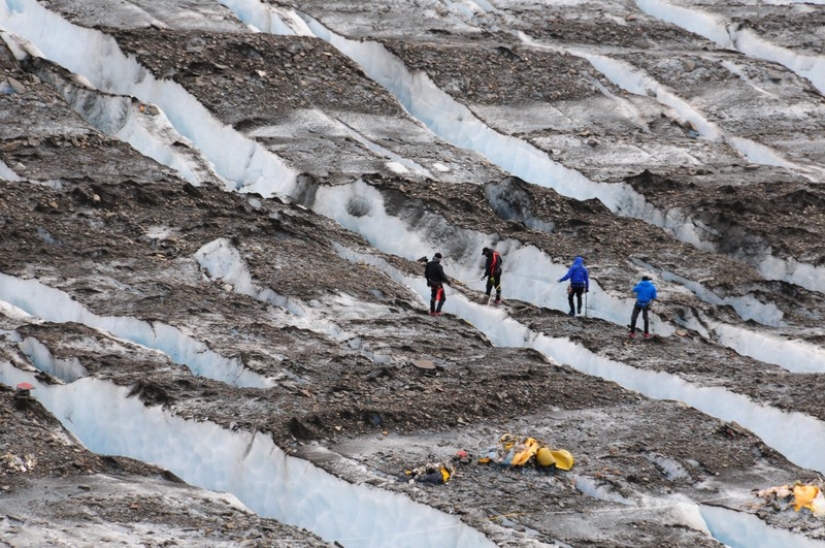 Aerial photo of an Alaskan task force recovering the wreckage of a C-124 Globemaster from the Colony Glacier.
Aerial photo of an Alaskan task force recovering the wreckage of a C-124 Globemaster from the Colony Glacier.
The inconstancy and variability of glaciers is confirmed by the following story, which happened 60 years ago. In 1952, a US Air Force plane crashed 80 kilometers from Anchorage, Alaska, with 52 passengers on board. It crashed into the side of Mount Gannett and then broke apart. A search team soon discovered the wreckage of the plane at the top of the Colony Glacier, but a few days later the wreckage, along with the bodies, was buried under a thick layer of snow, where it was frozen into the glacier. Due to worsening weather conditions, the search operation had to be suspended.
It was only in June 2012, during a training mission, that a US Army National Guard helicopter spotted aircraft debris sticking out of a glacier crevice. The search was resumed and investigators found some parts of the plane and body fragments. However, due to the movement and continuous melting of the glacier, the search was again postponed indefinitely.
Then, in the summer of 2013, scientists found that since 1952, the wreckage of the plane had moved 22.5 kilometers from the crash site, and some parts, due to the movement of the glacier, found their refuge at the bottom of Lake George.
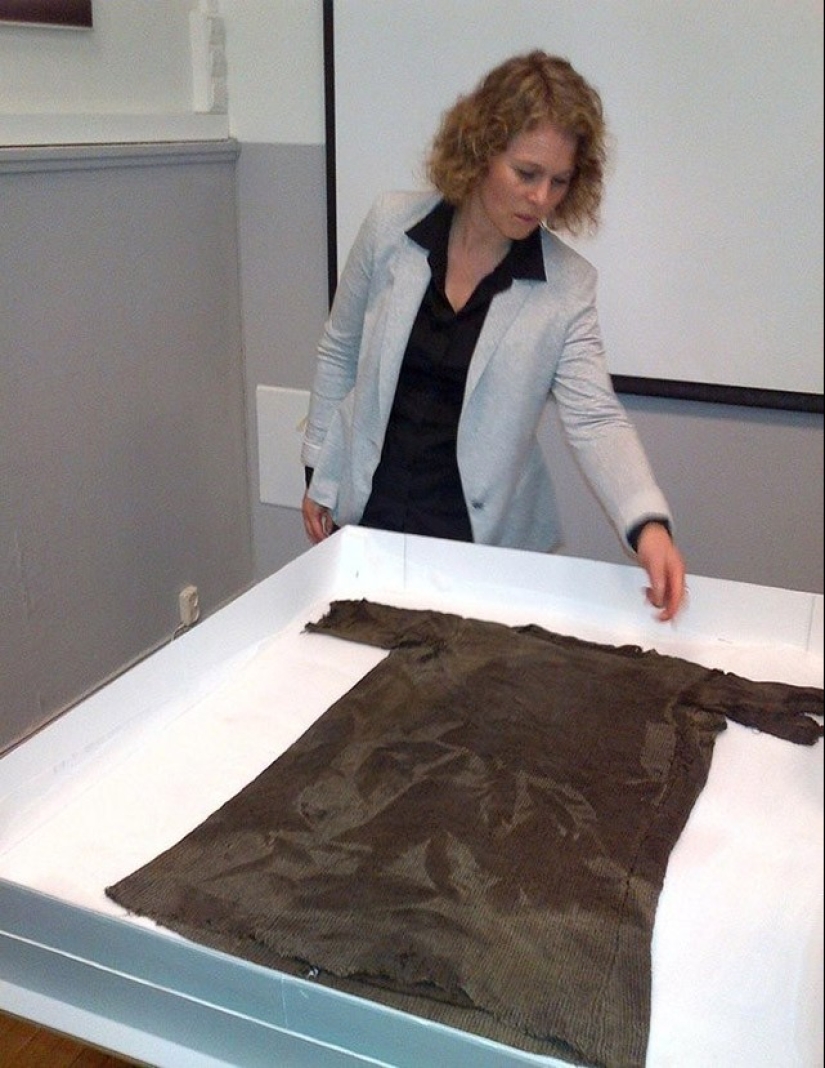 This is what the tunic looked like, discovered at an altitude of 2000 meters above sea level on the Lendbreen glacier.
This is what the tunic looked like, discovered at an altitude of 2000 meters above sea level on the Lendbreen glacier.
Melting ice from the Lendbreen glacier in Norway has allowed historians to imagine what Iron Age clothing looked like. In 2011, a unique handmade wool tunic was found. After two years of studying it, researchers from the University of Oslo and the Norwegian University of Science and Technology in Trondheim concluded that the tunic was made between 230 and 390 AD, more than 1,500 years ago. A similar tunic from the same period was discovered over 150 years ago in Sweden, indicating a trend for similar items during the Iron Age. According to researcher Lisa Bender, "This is one of the rare examples of complete clothing from the early first millennium AD that can be counted on one hand." It is likely that the tunic from Lendbreen was worn by a warrior - a slender man about 175 centimeters tall.
Scientists are confident that global warming, which is significantly accelerating the melting of glaciers, especially in Norway, could lead to an increase in the number of archaeological discoveries. Who knows what amazing discoveries await us under the ice sheet of glaciers next time.
 This is what the tunic looked like, discovered at an altitude of 2000 meters above sea level on the Lendbreen glacier.
This is what the tunic looked like, discovered at an altitude of 2000 meters above sea level on the Lendbreen glacier.
Recent articles

Leonardo da Vinci was accused of being fond of orgies. William the Conqueror, despite all his successes, was called a "Bastard" ...

Modesty? Decency? A sense of tact? No, you haven't heard! Just look at what the people from the selection below are doing! No ...

American documentary photographer Bruce Davidson came to the UK in 1960 for a couple of months on the assignment of Queen magazine. ...